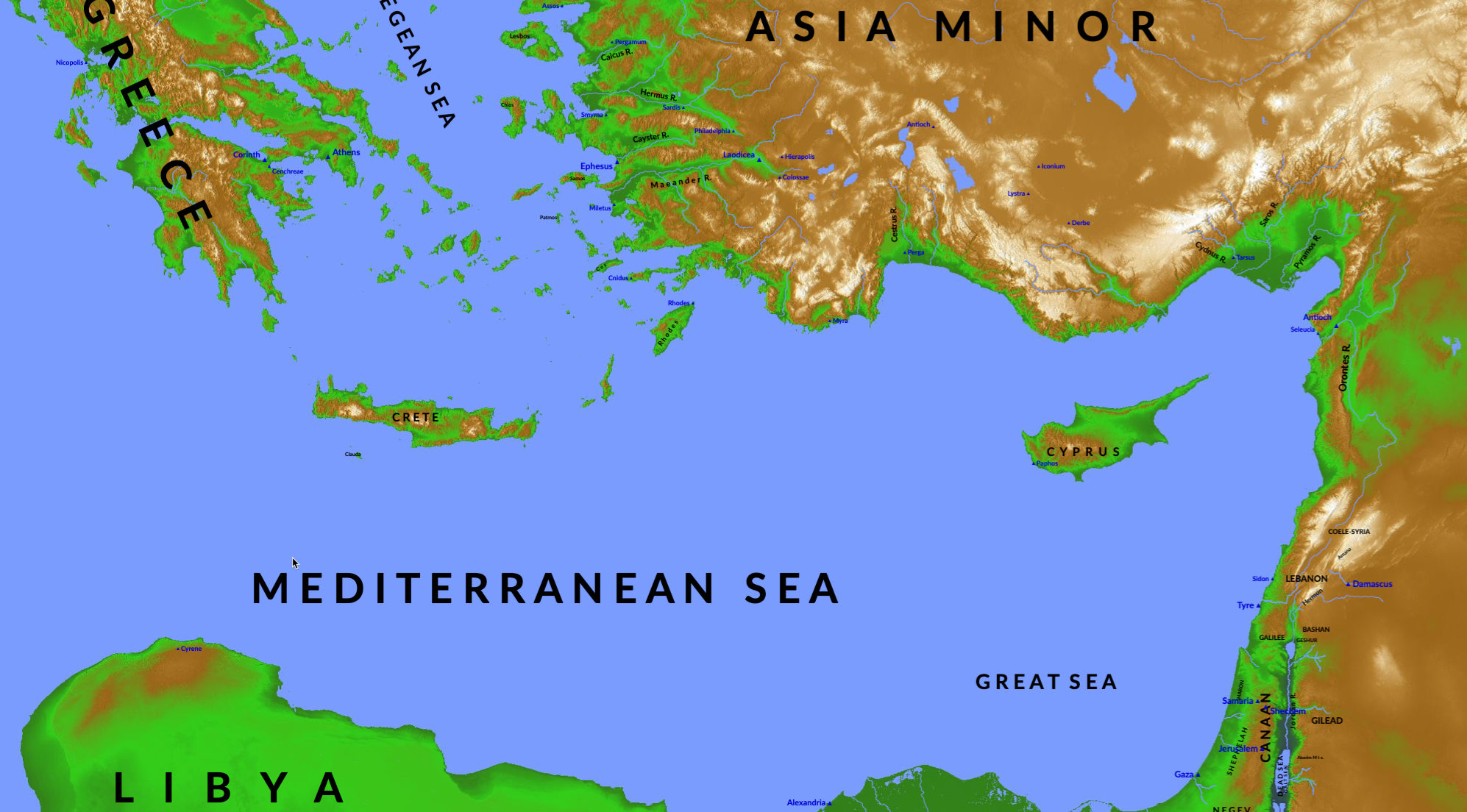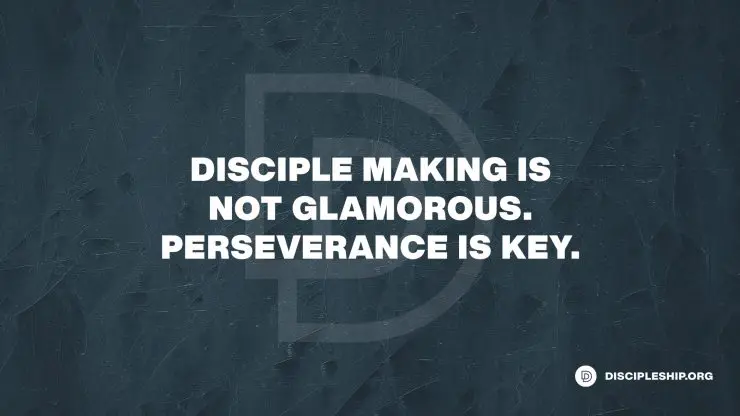Equipping Cross-Culturally
If Jesus’ disciples were to fulfill the Great Commission to “make disciples of all nations” and be His witnesses “in Jerusalem, Judea, Samaria, and to the ends of the earth,” they needed to be equipped to minister cross-culturally. How would this differ from the equipping they would receive in the Jewish towns throughout the Galilee region? The disciple-making skills of preaching, teaching, healing, and casting out demons would largely be the same. Their message and methods, though, would need to adapt to a Gentile audience. Even bigger than their message and methods, their hearts would need to change toward the Gentiles.
Jesus had spent time outside of Israel in Egypt as a child. How did this childhood experience shape His worldview as the Father was preparing Him for His Messianic assignment? Some of the formative experiences of my childhood growing up in Southern California were the “road trips” where our family loaded the back of our station wagon with bags of groceries, clothes, and toys and crossed the border into Tijuana, Mexico to share God’s love with families living in cardboard box houses.
How do cross-cultural experiences shape the worldview of our disciples and prepare them for the calling the Father has placed on their lives? Jesus modeled and ministered with His disciples cross-culturally on at least six different occasions. How did Jesus do mission trips?
First Mission Trip: Samaria
“Now he had to go through Samaria. So he came to a town in Samaria called Sychar, near the plot of ground Jacob had given to his son Joseph…. So when the Samaritans came to him, they urged him to stay with them, and he stayed two days.And because of his words many more became believers.”
John 4:4-5; 40–41
Early in His ministry, before He even challenged His disciples to be “fishers of people,” Jesus took them to Samaria. Since this was not the usual route Jews would travel between Judea and Galilee, this was an intentional route change to accomplish something in Samaria as well as in His disciples. Jesus understood that there were things his disciples couldn’t learn within their own culture and context – he had to get them out of their comfort zone so they would have the opportunity to “lift up [their] eyes and look on the fields” which were prepared for harvest (John 4:35).
The Samaritans were a mixed race, and they practiced a mixed religion. Jesus modeled relational evangelism. Where the Jews demanded a sign, miracles and healings to authenticate Jesus’ message, the Samaritans simply responded to the message itself. Jesus found common ground with the Samaritans, as they and the Jews both had common ancestry in Jacob. This short-term mission trip, which lasted less than a week, was a heart check for Jesus’ young disciples as they grew up judging and despising Samaritans.
Second Mission Trip: Gerasenes
“That day when evening came, he said to his disciples, ‘Let us go over to the other side.’ Leaving the crowd behind, they took him along, just as he was, in the boat. There were also other boats with him… They went across the lake to the region of the Gerasenes. When Jesus got out of the boat, a man with an impure spirit came from the tombs to meet him…. So the man went away and began to tell in the Decapolis how much Jesus had done for him. And all the people were amazed.”
Mark 4:35–36; 5:1–2, 20
Jesus had already appointed the Twelve as Apostles, and just across the lake from their home base in Capernaum was a whole different world. That region was called the Decapolis, a region made up of ten Gentile cities. Going to “the other side” literally meant leaving the safe haven of the Jewish towns and villages in Galilee (their comfort zone) to minister in Gentile towns dominated by Greek and Roman culture. The Gerasenes, also called the Gadarenes, were notorious for a few things – Gentiles, pig farmers, tombs in the caves, and a couple of tormented demoniacs. After Jesus ministered to the demoniac, He and the disciples immediately returned to Capernaum, so this mission trip lasted only a day. Since the delivered demoniac was told to go throughout the Decapolis and tell what God had done for him, a strong argument could be made that his testimony paved the way for the large crowds that came when Jesus fed the 4000. The impact of just one changed life!
Third Mission Trip: Tyre & Sidon
“Leaving that place, Jesus withdrew to the region of Tyre and Sidon. A Canaanite woman from that vicinity came to him, crying out, ‘Lord, Son of David, have mercy on me! My daughter is demon-possessed and suffering terribly.’”
Matthew 15:21–22
Jesus’ mission trip with the disciples to Tyre and Sidon comes after an intense time of ministry as well as the feeding of the 5,000, so it served a dual-purpose: short-term mission trip and a seaside retreat. Tyre and Sidon are in Lebanon, about 70 miles north of the Sea of Galilee. While it’s certainly possible that ministry happened on the journey to and from Tyre and Sidon, the only ministry we’re told of during their stay in Tyre and Sidon was the healing of the Syro-Phoenician woman’s daughter. There again, the distinction between Jew and Gentile is drawn, both from a cultural and religious standpoint, and we find Jesus modeling for His disciples the importance of crossing those barriers to demonstrate God’s love and power.
Fourth Mission Trip: Decapolis
“Then Jesus left the vicinity of Tyre and went through Sidon, down to the Sea of Galilee and into the region of the Decapolis… During those days another large crowd gathered. Since they had nothing to eat, Jesus called his disciples to him and said,‘I have compassion for these people; they have already been with me three days and have nothing to eat.’”
Mark 7:31; 8:1–2
This trip back to the Decapolis happened probably just a few months after Jesus fed 5,000 Jewish men, plus women and children, in Bethsaida. His disciples experienced that miracle first hand. Now here we have a crowd of 4,000 men, plus women and children, who would have been largely Gentile. The disciples could have said, “Hey Jesus, remember what you did in Bethsaida? You should do that again! That was amazing.” Instead they began to make excuses about how many months’ wages it would take to feed this crowd. Were their memories really this bad? It’s more likely that their disdain for the Gentiles caused them to not want Jesus to bless the Gentiles in the same way He had blessed the Jews. After all, whose Messiah was He? Think about this. When Jesus would challenge His disciples to be witnesses in Jerusalem, Judea, Samaria, and the ends of the earth, He was telling them He was the Messiah for the Jews, the half-Jews, and the non-Jews. Returning to the Decapolis on this short-term mission trip provided the opportunity for Jesus’ disciples to expand their thinking and develop a broader understanding of the mission to which they were called.
Fifth Mission Trip: Caesarea Philippi
“When Jesus came to the region of Caesarea Philippi, he asked his disciples, ‘Who do people say the Son of Man is?’”
Matthew 16:13
On this fifth mission trip, Jesus went beyond just the cultural influences of the Gentile culture and took His disciples right to the heart of the pagan world. Banias, Caesarea Philippi, was the home of a pagan temple that was at the heart of the pagan worship of that day. The crevice in the rock face from which water flowed into and through the pagan temple was called “the gates of hell” because they believed this was the location where the spirits traveled from the underworld to this world. While Jesus might have done ministry with His disciples in the region during this time, the significant event that’s recorded is Peter’s confession of Christ and Jesus’ declaration that He would “build His church, and the gates of hell would not prevail against it.” The disciples learned through this cross-cultural experience that Jesus’ spiritual power and authority transcends all cultures, contexts, and cults. His church marches across the globe as an unstoppable force!
Sixth Mission Trip: Samaria & Beyond
“And he sent messengers on ahead, who went into a Samaritan village to get things ready for him… Then he and his disciples went to another village…. After this the Lord appointed seventy-two others and sent them two by two ahead of him to every town and place where he was about to go. He told them, ‘The harvest is plentiful, but the workers are few. Ask the Lord of the harvest, therefore, to send out workers into his harvest field.’”
Luke 9:52–56; 10:1–2
After declaring that He would build His church, Jesus began to warn His disciples that the Father’s plan was for Him to go to Jerusalem to die. On His way to Jerusalem, Jesus sent a scout team ahead of Him to the villages He would visit. We don’t know exactly where they were sent, but it appears that Samaria was part of their travel plans. Jesus came first for the Jew, and then for the Gentile. He fed 5,000 Jews first, and then 4,000 Gentiles. He sent out the Twelve two by two throughout the Jewish towns in Galilee. Then He sent out the Seventy Two workers two by two to all the places He was about to go, among them towns inhabited by Gentiles. Here, Jesus was impressing upon His disciples that the spiritual harvest had extended beyond the borders of their comfortable Jewish community to the ends of the earth.
How was Jesus using mission trips to shape His disciples’ hearts and minds? What did Jesus’ disciples learn through all these cross-cultural experiences? What were the disciple-making threads that created a pattern and blueprint for ministry not only in Gentile territories but back home in Jewish territory as well?
-
- God’s love transcends culture.
- God’s truth transcends culture.
- God’s power transcends culture.
- God’s Kingdom transcends culture.
- Transformed lives transcend culture.
- The harvest transcends culture.
Cross-cultural mission experiences open eyes, hearts, and hands to the great harvest God is ushering in around the world, and they provide invaluable training opportunities within the disciple-making process. Without a doubt, Jesus’ disciples were shaped by these cross-cultural mission trips, and the fruit of these experiences wasn’t limited to Gentile areas. The disciple-making principles and priorities they learned in cross-cultural contexts truly provided a foundation for multiplication in Jerusalem, Judea, Samaria, and to the ends of the earth.
By Doug Holliday
Used by permission. Originally posted here:






